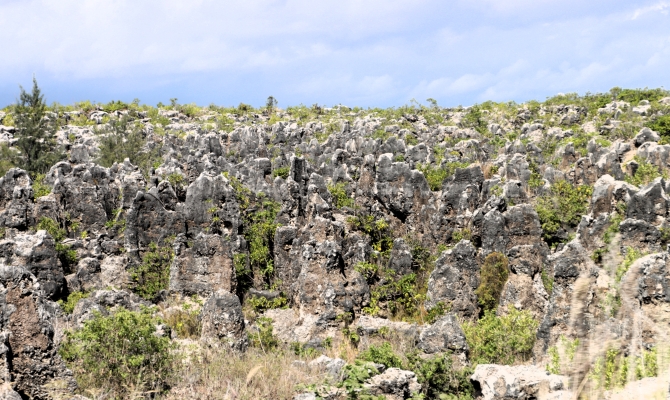
2 July 2024, Nauru – The Republic of Nauru is an isolated, roughly circular, uplifted limestone island located 60km South of the Equator, and with a population of around 11,500 people. With a total land area of only 21.2km2, Nauru is extremely vulnerable to the impacts of climate change.
To help the people of Nauru adapt to these impacts, the Nauru National Adaptation Plan project, a USD 1.8 million project funded by the Green Climate Fund and implemented by the Secretariat of the Pacific Regional Environment Programme, has set out to develop a National Adaptation Plan which will help the Government of Nauru prioritise adaptation options that are specific to Nauru and its unique geological location as well as its geographic landscape, which has been significantly altered by years of phosphate mining.
This week, a series of workshops are being conducted in Nauru to present the preliminary findings of a Climate Impact Vulnerability Risk Assessment (CIVRA) study, which was carried out by the Commonwealth Scientific and Industrial Research Organisation (CSIRO) and its partners, the University of Melbourne and Deloitte. Once finalised, the CIVRA report will inform and feed into the identification and prioritisation of adaptation options.
The CIVRA focused on nine priority sectors – Water Resources, Fisheries and Marine Resources, Health and Wellbeing, Disaster Management, Agriculture, Biodiversity, Coastal Development and Infrastructure, Land Management and Rehabilitation, and Human and Community Development. The preliminary findings of the assessment were presented today during the first day of the workshops by the CSIRO and Deloitte representatives, in a consultative process with stakeholders from government, civil society and non-governmental organisations, private sector and districts in the hopes that stakeholders, as residents of Nauru, will provide feedback on what may be missing, based on knowledge from their own lived experiences.
Dr. David Rissik, Partner in Sustainability and Climate Change at Deloitte, said,
“Before coming to Nauru, we had done a lot of work to gather a whole lot of information around the challenges Nauru faces from climate change which was used to draw up a preliminary assessment, but we also recognised that there were a lot of things for which we had knowledge gaps and data gaps.”
“We wanted to use the participants of the workshop to help us fill those gaps and also to make the most of their knowledge and lived experiences of the Nauru environment and the challenges.”
“Through today’s workshop we’ve filled a lot of the gaps that were critical to our assessment and it’s really pleasing to have that outcome and to learn about the nuances of Nauru’s unique situation in relation to climate change,” he added.
According to Dr. Rissik, the next steps will be to use the next few days of the workshop to continue collecting more information that will help finalise the CIVRA report, and to have individual discussions with some of the people who have this knowledge.
The team will then return home to finalise the CIVRA report, which Dr. Rissik hopes will develop into something that will not only help those who will be developing the NAP, but also for the Government and people of Nauru.
The Nauru National Adaptation Plan and Readiness workshops were held from 2 – 4 July 2024 and were organized by the Secretariat of the Pacific Regional Environment Programme (SPREP) in partnership with the Nauru National Adaptation Plan team under the Department of Climate Change and National Resilience.
For more information, please contact Ms. Filomena Nelson, SPREP Climate Change Adaptation Adviser, at [email protected].